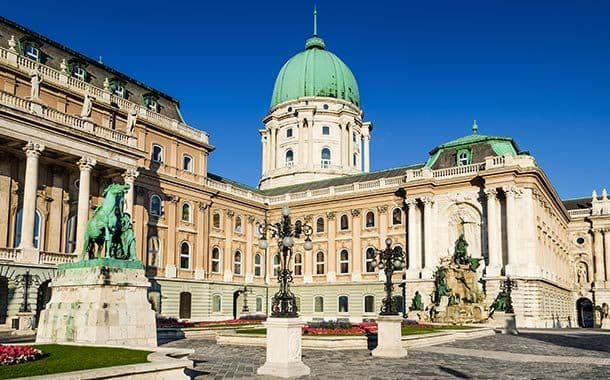Budapest is among the prettiest cities in Europe. Travellers tend to be pleasantly surprised after experiencing the wonders it has to offer. With the famous Danube river right through the centre of the city, one of Europe’s most stunning skylines, and fabulous architecture everywhere you go, discovering Budapest is sure to be memorable.
The Castle District in historic Budapest is filled to the brim with beautiful historic sights and world-class tourist attractions, including the Royal Palace, Matthias Church, and stunning medieval houses. You'll also find intriguing museums, bewitching meandering streets that trace the contours of the hill, and loads of unique local culture. There are lots of charming cafés and restaurants downtown where you can relax and try the amazing food.
The monuments are more than enough to complete your experience, but you get to enjoy them and take in the one-of-a-kind panorama of the Chain Bridge, the Danube, and the Pest side of this ancient city from across the river.
Flying out to the Hungarian capital shouldn’t be a problem; there are several low-cost airlines with great offers and services, including Lufthansa airlines, Etihad airways, Qatar airways, or Turkish airlines. It is recommended to manage your flight bookings well in advance before major holidays, as Budapest is a popular holiday destination.
Castle Hill
A 1km-long limestone plateau towering above the Danube is Castle Hill, also known as Castle District. This majestic landmark contains Budapest's most cherished medieval museums and monuments. It is an official UNESCO World Heritage Site. With its grand views, it is considered by many to be the finest sight in the capital. With so many inspiring things to see in Budapest, you should start at Castle Hill.
Beneath the limestone cap is a 28km cave catacomb. They were created by thermal springs and used by the Turks for military purposes as well as air-raid shelters during World War II. It was also used as a secret military base during much of the Cold War. The walled-in area contains two parts. To the north you’ll discover Old Town, where the common people lived during the Middle Ages. Today, the owners of the much sought after burgher houses are far from 'common.' The second part of the walled-in area is the Royal Palace or Buda Castle.
A Brief History of Buda Castle
Construction and renovation continued into the 15th century after the 1476 marriage of King Matthias Corvinus to Beatrix, who hailed from Naples. Many Italian craftsmen and artisans accompanied the country's new queen, bringing with them Renaissance style of art, and the influence of its philosophy. It is an influence that, visible as it was in art and culture, was seen as a sign of the divine nature of the marriage.
Tragically, the palace was devastated during the liberation of Buda from the armies of the Turks. A small Baroque palace was built in the 18th century. This palace was identical to the core structure of the palace which stands today. During the age that followed, the palace supplied a venue to munificent ceremonies symbolizing a new harmony between the dynasty and the nation during the rule of the Austro-Hungarian Empire. The task of rebuilding the Royal Palace carried on into the 19th century and was completed in 1904. The palace was badly damaged by the end of World War II. Once again, it had to be rebuilt and this time in Neo-Baroque style, using many of its original components.
Discovering Buda Castle
The best way to approach this extraordinary monument is to follow the cobblestone streets and come upon the plateau at your own pace. Take your time to absorb the many sights, as a thorough exploration of Castle Hill can take the better part of an entire day. If you're short on time, visit Trinity Square, Fishermen’s Bastion, and Matthias Church. Events are held all year round. Buda Castle and Castle Hill are among the finest historical and cultural sites in the world. Travellers who appreciate unique and rich architecture that is woven into the culture behind it could hardly find a more fulfilling experience.
Find out more about how you can experience Budapest
By Amal Ahmed
